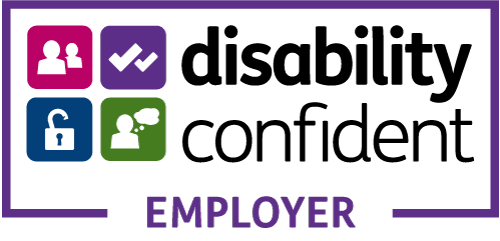A pain fuelled life
Welcome to the first in a series of blogs about coping with pain
The Oxford Dictionary defines pain as a,
“ highly unpleasant physical sensation caused by illness or injury”
This is not a particularly encouraging definition nor is it a subject that people often like to talk about. After all, focusing on pain can sometimes intensify our experience of it, rather than make us feel better. However, this does not have to be the case and it is certainly a topic which impacts many of us and so is worthy of discussion.
Did you know that a staggering 20.5% of the World’s population is affected by chronic pain? That is over 1.5 billion people worldwide! In the UK two fifths of adults are affected.
Whether the cause is through injury, chronic fatigue, fibromyalgia or one of many other chronic pain conditions, it can be devastating for sufferers and their families, and can lead to problems such as mental health issues, loneliness and poor employment outcomes.
So what we can do?
If you are in pain, the first port of call should always be a medical professional.
Alongside this, it will often be up to you to find ways of coping with your pain through
self- care and fortunately, there are many strategies and techniques which can help if you are experiencing a pain condition.
Self-care strategies require commitment, time, accountability, openness and a willingness to make changes which are not always easy when we are in pain and feel tired and lacking in energy. Speaking from experience, the results are more than worthwhile!
However, before we dive deeper into specific strategies, it is essential that you first take some time to record everything you can about your pain.
No-one understands your pain better than you do and so gathering as much information about your specific pain and the impact is often the key to making a positive difference.
The Groundwork – 6 steps to understanding your pain:
Step 1: Your Pain Portfolio
Buy yourself a large notebook specifically for the purpose of writing down everything you have learned about your pain and working through these steps. Choose a book that is attractive to you and write your name inside. Make a commitment for this to be your companion on your pain journey and write the date each time you make an entry.
Step 1 addresses questions such as:
Where do you feel the pain? Is your pain in single or multiple areas?
How often do you feel the pain?
How would you rate your pain at different times of the day?
Take note of this every hour during waking hours for 7 days.
Identify what makes your pain reduce and what makes it feel worse?
Step 2: Illness or injury?
Step 2 includes writing down all the details of what happened to you.
Be really specific about what was happening around you when you first noticed your pain.
Was your pain caused by an injury/event?
Were you diagnosed with an illness?
Was there no obvious cause?
When did you first notice the pain?
Has the pain changed over time?
Given this information, what can you learn about your pain?
Step 3: Impact on identity
Step 3 addresses your thought patterns and the impact of your pain and looks at questions such as:
What are your thoughts about pain in general?
Do you believe pain means you will never feel good again?
What emotions do you feel when you think about your pain?
What areas of your life have been impacted and in what ways?
What do you perceive you have lost?
What does having to live with pain say about you?
Who are you now?
What are your goals? Have these changed due to your pain?
What 6 things are most important to you?
What are you looking forward to?
Step 4: Noticing thoughts
Step 4 looks at your awareness of your pain and includes exercises such as setting yourself a task to notice your thoughts throughout the day, not just about your pain but your thoughts in general. Perhaps set an alarm on the hour for several hours per day and write down the types of thoughts you are having. No need to analyse, just notice the thoughts and write them down.
Step 5: Activities
Step 5 addresses how you spend your time now versus what you used to be able to do.
During this step you would create 2 lists of activities. The first list should consist of activities you do each week. Become conscious of how you are spending your time. You can divide this list into the following categories: necessary activities such as work, routine activities such as household tasks and pleasurable/relaxing activities such as hobbies.
Evidence shows that the people who feel the happiest have a good balance of these types of activities in their schedules. This exercise will give you a benchmark of your current schedule and allow you to notice where there are obvious gaps that can be addressed. Re-arranging your activities to correspond with your pain and energy levels can be an important shift and allow you to pace yourself appropriately in order to make the most out of your day.
The second list should consist of activities you used to do, perhaps when you were much younger. What did you naturally enjoy doing, when there was no pressure on you? What did you enjoy and gravitate towards?
This step also considers which activities you no longer do as a result of the pain and which activities you avoid doing as a result of fear of pain?
Step 6: Review
Step 6 pulls all the information together and includes taking some time to review all the information you have gathered about yourself and your pain.
What have you noticed? Are there any patterns? Are there any repeated emotions or thoughts? Has anything surprised you? How has life changed? How have you changed?
What adjustments can you now implement that would provide some relief?
Although completing these initial steps will require some time and effort, it will provide you with a valuable roadmap of how you can start to move forward and manage your pain in a more helpful way, perhaps through processing emotions, challenging your thought processes, adjusting your activities and goals or making more time in your schedule to take care of yourself.
If you need support in managing your pain, the first port of call should always be your GP. Alongside this, working with one of our therapists can help you to process your thoughts and emotions and also help you to tailor a plan to help you navigate your pain journey and help you to feel more like yourself again.
In the next blog in this series, we will look more closely at how we can turn this roadmap into a plan and how integrating specific self-care techniques can boost your resilience and mood.
Useful Links:
https://www.nhs.uk/live-well/healthy-body/ways-to-manage-chronic-pain/
https://www.britishpainsociety.org/mediacentre/news/the-silent-epidemic-chronic-pain-in-the-uk/
See you next time!















